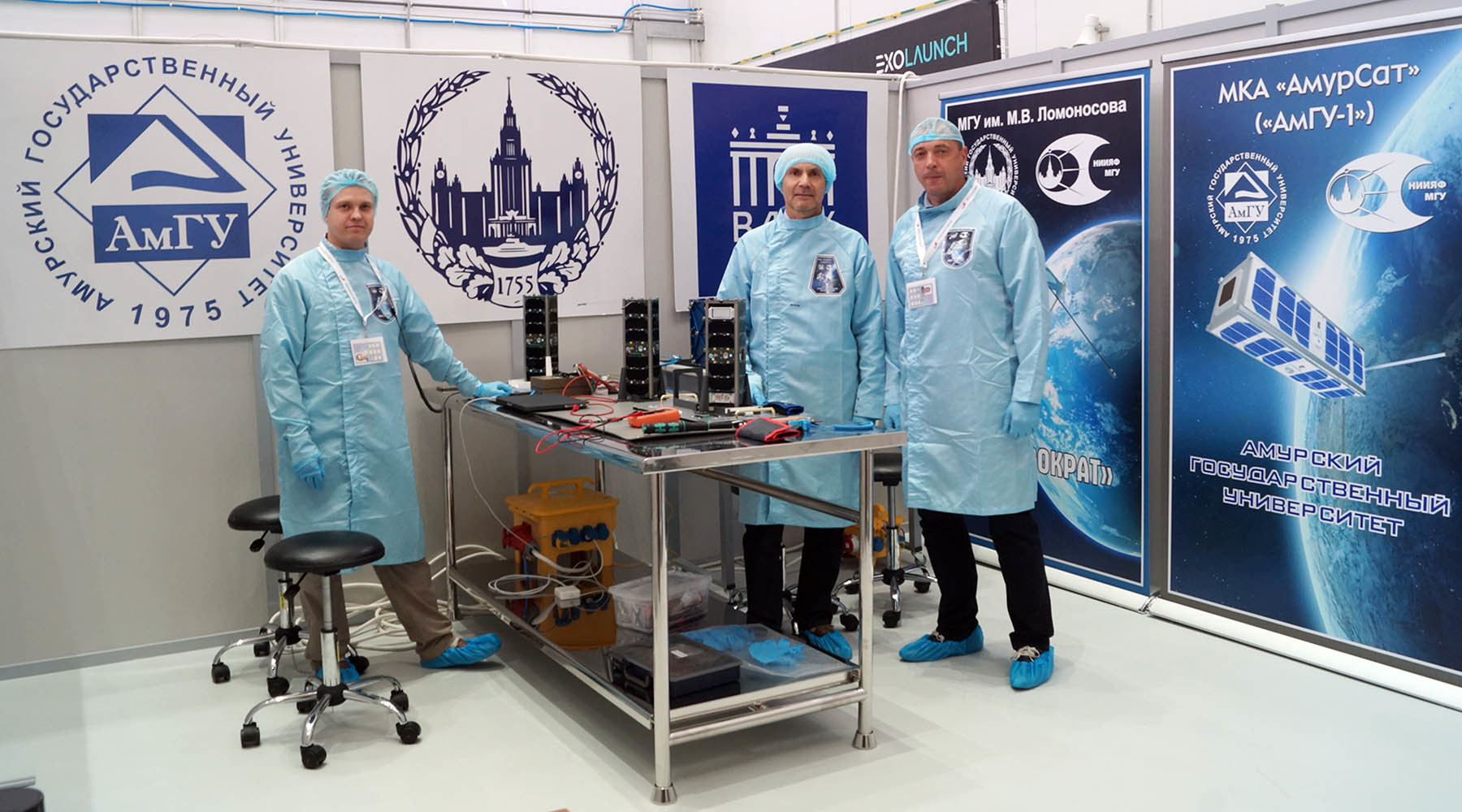The State Space Corporation Roscosmos, the Federal Service for Hydrometeorology and Environmental Monitoring (Roshydromet) and Moscow State University named after M.V. Lomonosov Moscow State University (MSU) concluded an agreement on the creation of systems for operational monitoring of space weather based on small satellites of the standard cubsat. The objective of the project is to monitor the background radiation and ultraviolet radiation in near-Earth orbit. This was reported by the press service of Moscow State University.
Recall that kubsats are called ultra-small satellites of a cubic shape 10 x 10 x 10 cm, which can be combined into double, triple and multi-component blocks. For such small dimensions, a special miniature research equipment is being developed.
The signing of the agreement was largely facilitated by the successful pilot launch in 2019 of the first three Russian cubesats developed by the D.V. Research Institute of Nuclear Physics Skobeltsyna (SINP MSU) for Moscow and Amur State Universities under the program "Roscosmos" "UniverSat", created for domestic universities. Then the data obtained by these devices experimentally confirmed the fundamental possibility of using such satellites in the interests of meteorological services.
“We produce such satellites for Roshydromet, our partner who is responsible for monitoring potentially dangerous phenomena in near-Earth space related to space radiation,” said Professor Mikhail Panasyuk, Director of the Research Institute of Nuclear Physics of Moscow State University, in an interview with RT.
According to Panasyuk, all small research satellites of the Research Institute of Nuclear Physics are capable of tracking solar activity and radiation conditions in the Earth’s orbit, and together they can form a single system for global monitoring of geophysical parameters of outer space.
“The increase in the Russian orbital constellation due to small spacecraft is an important step in the development of an operational system for monitoring space weather,” says Igor Shumakov, head of Roshydromet.
According to him, there will be an opportunity "to identify dangerous heliogeophysical phenomena and prevent the possible consequences of their impact." This is in demand by the Ministry of Communications, the Ministry of Energy, the Ministry of Transport, the Russian Emergencies Ministry and other ministries and departments.
According to representatives of Roscosmos, cubsatswill becomea functional complement to the existing federal low-orbit meteorological constellation of the Meteor-M series satellites, with which Roscosmos is currently providing Roshydromet data.
- Satellite Developers for the UniverSat Program
- © Roscosmos
From a scientific point of view, the project aims to study the nature of radiation fields in space. According to Mikhail Panasyuk, radiation in the orbit of the Earth is a danger not only to humans, but also to spacecraft.
“Cosmic radiation is the most dangerous factor for all human activity in space. It poses a threat to humans and other bioforms, to solar panels and microelectronics. Our cubsat group will be able to monitor the radiation background in almost real time, ”said Mikhail Panasyuk.
According to him, the next mission kubsat will be put into orbit in July 2020.

